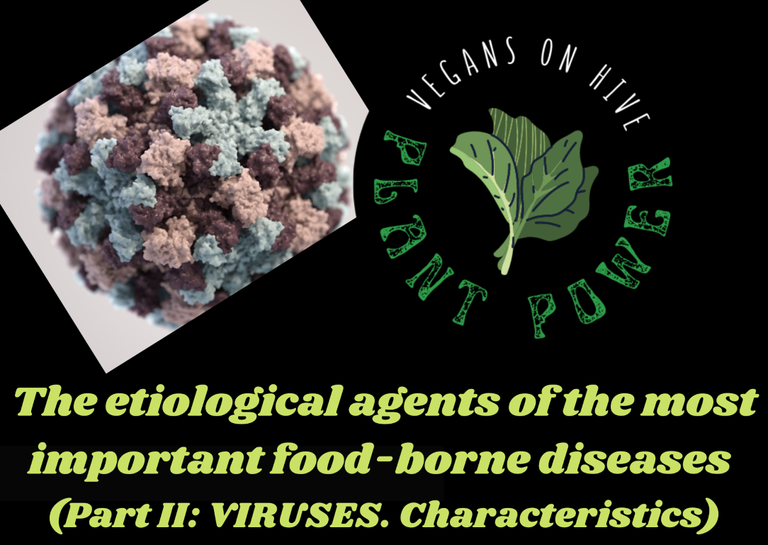
Hello plant based foodies, wherever you are in the world and the galaxy! Here @sirenahippie
Today we continue with the series of educational posts, which we consider important for all people, vegan or not, since they provide timely information about aspects related to health and food management. Previously we have talked about food diseases, and some etiological agents associated with them, more specifically, we talked about bacteria, diseases they cause, symptoms and consequences of these diseases. If you want to read those posts, below we offer you the respective links:

As we have already mentioned in the previous post, an etiological agent is the microorganism or substance that causes a disease, and one of the most important and persistent etiological agents worldwide are viruses; and today we will talk about the characteristics of viruses associated with food diseases.
Characteristics of viruses associated with food diseases:
- These infectious agents cause acute nonbacterial gastroenteritis, and are usually very contagious, and can be transmitted through fluids from a sick person to a healthy person, or through contaminated food or liquids. When foods or liquids are not handled correctly, or do not have good thermal management, they can also transmit viruses.
- On the other hand, viruses, unlike bacteria, cannot multiply in food nor generate toxins, but they do have the capacity to be much more resistant, such as temperature changes, since they are preserved for months in food. and frozen liquids, for weeks in refrigerated foods and liquids, and resist the heat of cooking for several minutes.
- Viruses remain in water (sea, rivers, lakes, wells, etc.) for weeks, conserving in all cases their power of contamination and pathogenesis. They also resist ultraviolet radiation and Gamma rays, which are processes usually used by the food industry in food preservation.
- They are equally resistant to physical and chemical water treatment processes. They remain in environments with acidic or basic pH, this factor does not really affect them.
- The modes of transmission of viruses are:
a) Person - person or person - animal, by fecal-oral route.
b) Environmental: By inhalation of microparticles suspended in the air.
c) Food/Water or liquid - person: Due to consumption of contaminated food and water or liquids.
d) Food – food: Due to cross contamination, either at home or at the food processing site.


You've been curated by @plantpoweronhive! Delegations welcome!
